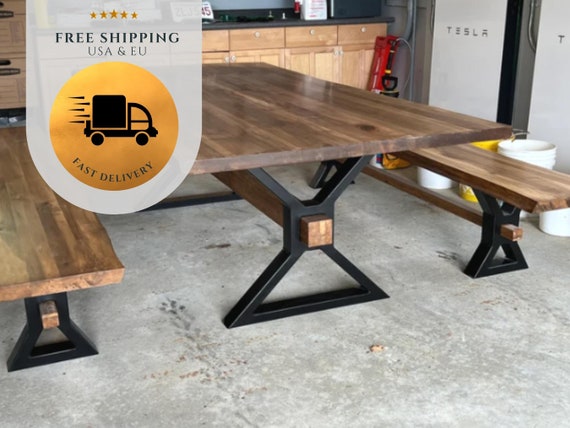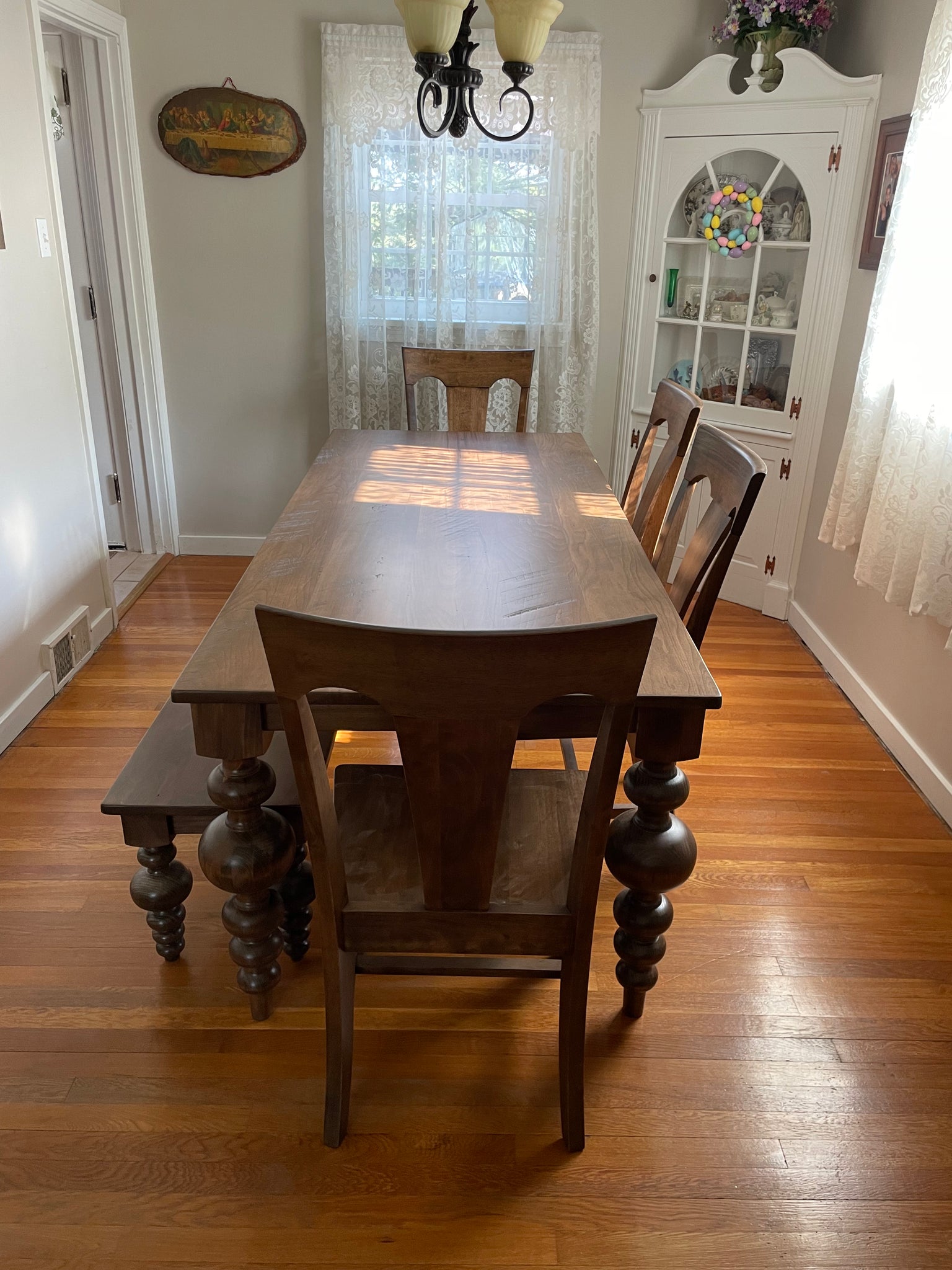Discover the most effective Materials for Dining Room Table Legs for each Design
Discover the most effective Materials for Dining Room Table Legs for each Design
Blog Article
A Thorough Consider Table Leg Styles: Locating the Perfect Match
Picking the appropriate eating table leg style is important for both aesthetic appeal and useful performance. Conventional four legs provide timeless elegance and stability, while the pedestal base offers boosted legroom and a modern look. For those with larger tables, trestle legs guarantee sturdy support, whereas hairpin legs present a mid-century modern ambiance with their minimal style. The x-shaped legs mix contemporary style with boosted security. Each of these alternatives brings one-of-a-kind advantages, making the choice greater than just a matter of preference. Discover additionally to find which design completely enhances your eating area and lifestyle.
Traditional 4 Legs
Among the different types of eating table leg styles, the standard four-leg layout stays an ageless choice for several families. Four legs supply balanced support, ensuring the table remains secure and qualified of bearing substantial weight (dining room table legs).
From an aesthetic viewpoint, the typical four-leg style can be quickly adapted to numerous indoor styles. Whether crafted from wood, steel, or a combination of materials, these legs can be delicately sculpted, smooth and minimalistic, or anything in between. Their versatility permits them to match both rustic and contemporary setups effortlessly.
Furthermore, the straightforward framework of the four-leg style helps with convenience of motion and placement within an area. Unlike more facility bases, this design minimizes blockages, offering ample legroom for restaurants. In summary, the typical four-leg eating table leg style weds enduring sophistication with sensible functionality, making it a sharp selection for those looking for both kind and feature in their eating furnishings.
Stand Base
Frequently celebrated for its stylish and space-efficient layout, the pedestal base is a prominent alternative to the conventional four-leg configuration in eating table leg designs. This distinct base normally includes a solitary central column sustaining the table top, which can differ in form, from ornately carved wood to streamlined, modern-day metal. Among the primary benefits of the stand base is its capability to optimize legroom and seating adaptability. Without edge legs, restaurants are managed greater freedom of motion, making it an ideal option for round and oval tables that promote even more intimate and comprehensive events.
Additionally, the stand base's main support can handle significant weight, allowing for the usage of heavier table tops, such as marble or thick hardwood. This toughness coupled with its visual flexibility makes the pedestal base a prominent selection in both conventional and contemporary interior setups. It can seamlessly integrate with various design motifs, from classic elegance to minimal modernity. The main column itself uses a canvas for complex layouts and creative expressions, including a component of aesthetic passion below the table. In recap, the pedestal base integrates functionality with design, making it a fine-tuned and sensible alternative for varied eating atmospheres.
Trestle Legs
Trestle legs supply a robust and ageless foundation for dining tables, identified by their horizontal cross-bracing and sturdy support beams. Stemming from middle ages times, this layout has progressed yet preserved its important structure, making it a seasonal favorite in both typical and modern settings. The main trestle beam of light, commonly sustained by two or even more upright blog posts, provides outstanding stability, permitting for larger table sizes without the demand for added legs.
A significant benefit of trestle leg tables is the sufficient legroom they supply. Unlike tables with four corner legs, the lack of obstructions at the table's edges gives unobstructed space for chairs and restaurants, enhancing convenience and availability. This makes trestle tables optimal for suiting larger events, whether in a dining space or a banquet hall.
The aesthetic versatility of trestle legs is notable. Available in a variety of products such as wood, metal, and composite, they can be completed to complement a wide variety of indoor designs. From rustic farmhouse to sleek modern-day layouts, trestle legs can be personalized to match individual tastes. Their enduring appeal and practical advantages make trestle legs a compelling option for those looking for both design and usefulness in their eating table.
Barrette Legs

The allure of hairpin legs lies in their simpleness and flexibility - dining room table legs. Offered in a series of materials, including steel and brass, they can be ended up in numerous colors to match various interior styles. Whether coupled with a rustic wood tabletop or a contemporary glass surface, barrette legs easily mix functionality with a touch of vintage appeal
Longevity is another significant attribute of barrette legs. Despite he said their delicate appearance, these legs are engineered to bear substantial weight, making sure the eating table continues to be secure and secure. Furthermore, they are fairly simple to set up, making them a prominent choice for DIY enthusiasts and expert furniture makers alike.
X-Shaped Legs

Created from products such as steel, wood, or a combination of both, X-shaped legs can be tailored to match different layout choices. Steel legs often provide a smooth additional resources and commercial feeling, perfect for loft-style apartments and modern dining areas.
Additionally, the design behind X-shaped legs makes certain also weight circulation, minimizing the risk of wobbling and enhancing sturdiness. This makes them especially fit for bigger table that call for added assistance. Basically, X-shaped legs mix sensible design with modern-day aesthetics, making them a go to this site timeless selection for varied eating settings.
Verdict
An extensive understanding of eating table leg designs discloses the unique characteristics and advantages of each style. Trestle legs guarantee durable support for larger tables, and barrette legs introduce a mid-century modern-day aesthetic.
Report this page